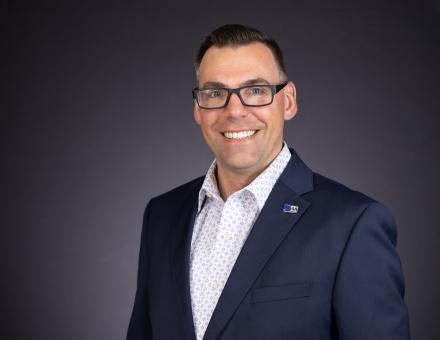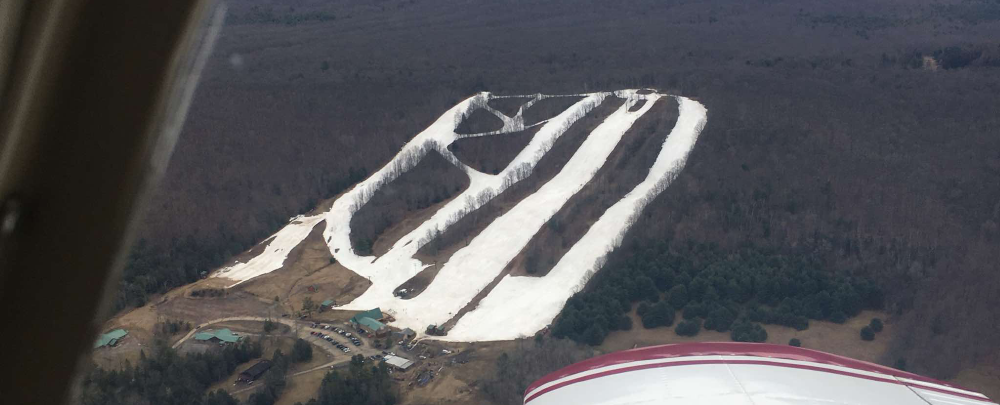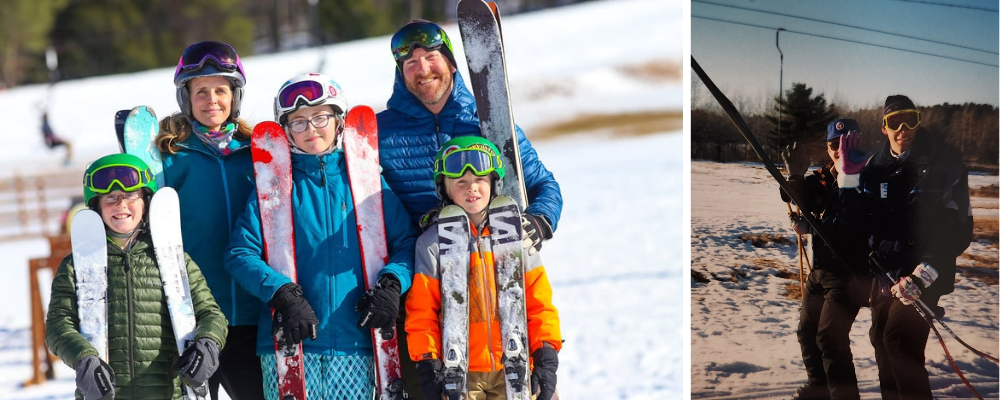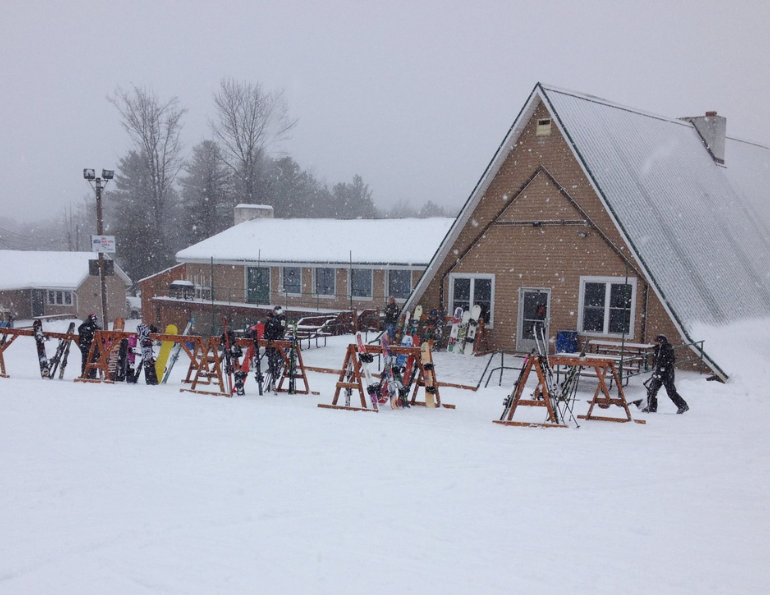 Ryan Schramm, General Manager, Powderhorn Mountain Resort, Colo.Speeding down the dirt lane to Ski Sawmill, I’m struck by the realization that the Norway spruce trees lining the access road are much taller than I remember. In fact, I can recall the year they were planted to help mitigate snow drifts. 1998. How did that happen so fast?
Ryan Schramm, General Manager, Powderhorn Mountain Resort, Colo.Speeding down the dirt lane to Ski Sawmill, I’m struck by the realization that the Norway spruce trees lining the access road are much taller than I remember. In fact, I can recall the year they were planted to help mitigate snow drifts. 1998. How did that happen so fast?
I’m visiting my home ski area for the first time since 2007. I round the snowmaking pond, a modest two acres, letting the rear end of the vehicle drift just a touch like I did back in high school, my buddies begging me to peg the throttle and risk certain drowning. Plumes of dust follow me.
I take the last bend in the road, and see the spot where I first winter-camped when I was 12, the lot where I learned how to do a donut in an old RWD car, the A-frame silhouette of the lodge where I spent every evening after school completing homework, eating sandwiches prepared and delivered by my grandmother in between endless laps of the T-bar while training slalom under the lights. New dorm-style family lodging stands on the site of the original motel, where I worked in the restaurant through college from 1996 to 1999. The old motel burned down in 2000.
Down Memory Lane
Everyone has a home hill—some big, some small, and all a launching point for core memories and a tether to winter sports. Mine falls squarely into the small category: just 515 feet of vertical and 12 runs. A few T-bars, a double, and a new-ish triple lift installed in 2011—the first new lift in 40 years. My grandfather always joked that 50 feet of the vertical only appeared when the snowmaking pond was fully drained.
Ski Sawmill began in 1969 as Oregon Hill, named after the ridge down which it cascades on the northern side. Located in the far reaches of Lycoming County in north-central Pennsylvania, it attracts many of its visitors from Williamsport and the surrounding areas.
My dad and uncle both started skiing here with a school program that began the same year as the ski area in 1969. They would constantly beg my grandparents to take them skiing. My grandfather capitulated and began driving the 45 minutes or so a few times a week. He would sit in the lodge and watch them take lessons and lap the T-bar until, one day, he grew tired of waiting for them and decided at age 42 to learn to ski, too. It was at that moment a skiing family was born—one that continues to this day, with my dad, my cousins, and all the kids.
Yesterday and Today
I see Mike Knefley, the owner, operator, lift mechanic, snowmaker, and groomer, during my visit. Mike is also a ski-patroller and instructor, and gives the lifties their breaks. He is a true owner-operator with a remarkable work ethic.
His family bought the resort in 2001, after it had experienced a few tumultuous years on the brink of financial collapse. Twenty-five years in, they are still carving out a niche for an important community activity. It’s the home mountain for generations of skiers and riders from the surrounding area, including my family.
Like many small ski area operators, one of the biggest challenges Mike faces is staffing. Attracting industry-trained experts is not feasible, due to both location and cost, so he almost always grows his own workforce. The cost adds up over time, and despite good year-to-year retention, training demands a large portion of a modest payroll. Yet, it remains paramount for Mike. “Our employees are a reflection of us, of the owners, the resort, and our culture. Fostering them is key to make it all work,” he says.
I know that well. My personal ski industry journey started here, teaching lessons, running the NASTAR program, and even working nights in the restaurant kitchen. This experience was my first taste of the many hats folks must wear for small ski areas like Sawmill to succeed.
 Seeing north-central Pennsylvania’s Ski Sawmill, and its 515 feet of vertical, from above.
Seeing north-central Pennsylvania’s Ski Sawmill, and its 515 feet of vertical, from above.
Small Area Culture
Every day is different at a small area. For Mike, one day might be spent building the terrain park, another making snow or repairing the spring on a T-bar. I remember a busy kids-ski-free day at Sawmill when he shepherded one family as they moved through the resort, from issuing their tickets, to the rental shop, to teaching a lesson, and even passing out a few T’s at the T-bar later that afternoon. Mike was like the butler in Mr. Deeds, the family remarked, appearing from thin air, exactly when needed, at every turn. They had no idea he was the owner.
Mike manages a small, stellar team of dedicated individuals, including my dad, who has been the ski school director, patrol director, and head coach, sometimes simultaneously. Just a handful work year-round. Everyone at the resort is expected to be task-flexible, and they excel during the busiest days.
Mike always finds time to listen to his employees’ ideas about how to make things easier, better, or more efficient. “It is impossible to manage a ski resort well from a desk and a radio in one hand. You need to be out and about, supporting the staff wherever they need help most on any given day,” he says.
“It builds connections with each team member and allows them to feel supported,” he adds. “In turn, they take more pride in the work they accomplish each day, knowing I would jump in to help them whenever needed.”
War Stories
Mike and I trade stories like old friends rekindling after a long hiatus. His tales of war and peace are eerily similar to mine at Powderhorn, where I’ve served as general manager since 2018. While the scope might be a bit different in Colorado than in Pennsylvania, each of our stories could be told about either ski area—or any ski area across the country.
“Why do people forget you exist until it snows, and then they all show up on the same day?” Mike muses.
“I have no idea, but that is exactly what happens in Colorado, too!” I reply.
Another thing we agree on: “The thing that really makes these small places work is the people. The community,” says Mike. “People are emotionally invested in this place. Not just me, or even the staff. But the guests that come to visit.
“I had the thought that the pandemic might have been the end of us for a bit,” he adds. “All our groups canceled. It was tough to pay our bills. People had their fun removed from them.
“But then, as we were able to reopen the next season, people came out in force. They wanted to recreate outdoors, locally. No one wanted to get on a plane to go out west. They fell in love with it all over again. I had so many people pull me aside to thank me just for being open to allow them to have fun again.
“It saved us, but it saved a part of me, too. I felt like maybe all the hard days were worth it. People cared for us.”
 Left to right: The Knefley family, who acquired Ski Sawmill in 2001, in the early days; Author Ryan Schramm, circa the 1990s, riding the Sawmill T-bar with his uncle, who began skiing there in 1969 when the hill first opened.
Left to right: The Knefley family, who acquired Ski Sawmill in 2001, in the early days; Author Ryan Schramm, circa the 1990s, riding the Sawmill T-bar with his uncle, who began skiing there in 1969 when the hill first opened.
The Joy of Skiing
Mike’s dedication to Ski Sawmill as a business is clear after 25 years, and his passion for the sport is a beacon to all those around him. All three of Mike’s children grew up at the resort, working and skiing there just like I did all those years ago. It’s a lifestyle choice I aspire to emulate for my young daughter. I desire to provide those lifelong memories for her to draw upon, experiences that will inspire her to choose a lifetime of sport and health and joy.
I ask Mike about skiing at other places. “I prefer the feel and culture of the smaller, independent places these days. It makes me feel like I’m at home, and everyone there is there for the same reason,” he says.
“If you can’t have fun skiing on 500 vert, you’re doing it wrong!” I quip. It was my grandfather’s twist on a famous Warren Miller quote: “The best place in the world to ski is where you’re skiing that day.” It’s my favorite one-liner, and we both chuckle at it.
“You’re right,” he replies. “Every time we go somewhere else, someone always comments on how my kids rip. They used to get bored, as teenagers do, so they would find ways to entertain themselves by skiing. Turns out they just built their fundamental skills, and once they learned how to bend a ski, they had it all figured out.
“We build great skiers and riders at Sawmill because they can find the time to work on skills and ski everything.”
Parting Thoughts
I realize that my visit has interrupted Mike’s lodge painting project, and figure it is time to let him get on with his day. The lodge is still exactly how it appears in my childhood memories, the large A-frame to the east and the long two-story addition jutting abruptly to the west, with a deck all along the front edge. Picnic tables are omnipresent.
I’ve been swimming all day in memories of this magical place, but Mike has a memory to share with me, too, before I go. “I have a memory of George I wanted to tell you,” he says. (He remembers my grandfather’s name?)
“When George turned 70 and got his free senior pass, he used to come into my office with the cash that it would cost for a regular season pass. He would ask me to distribute it to the lifties as I saw fit, anonymously. He did this every year until he passed. There were years it made all the difference to some of those employees.
“It inspired me to be good, make the right decisions. Be helpful. To keep going, because he, and so many others, cared so deeply for this place.
“He reminded me it was bigger than just me and my business. He wanted to show a small gesture of success, and I’ll never forget it.”
I never knew this. My grandfather’s passion for the resort and for the sport, and how much we all desire to see it succeed and thrive, leaves me speechless, holding back tears.
Ski Sawmill, and all the small hills like it around the country, aren’t just important to manufacture lifelong memories and churn out new skiers and riders. With every lap of the T-bar, every grandmother’s PB&J, every laugh, and every run shared with a loved one, the soul of our sport thrives and permeates our families, friends, and colleagues. And that makes what we all do special.





